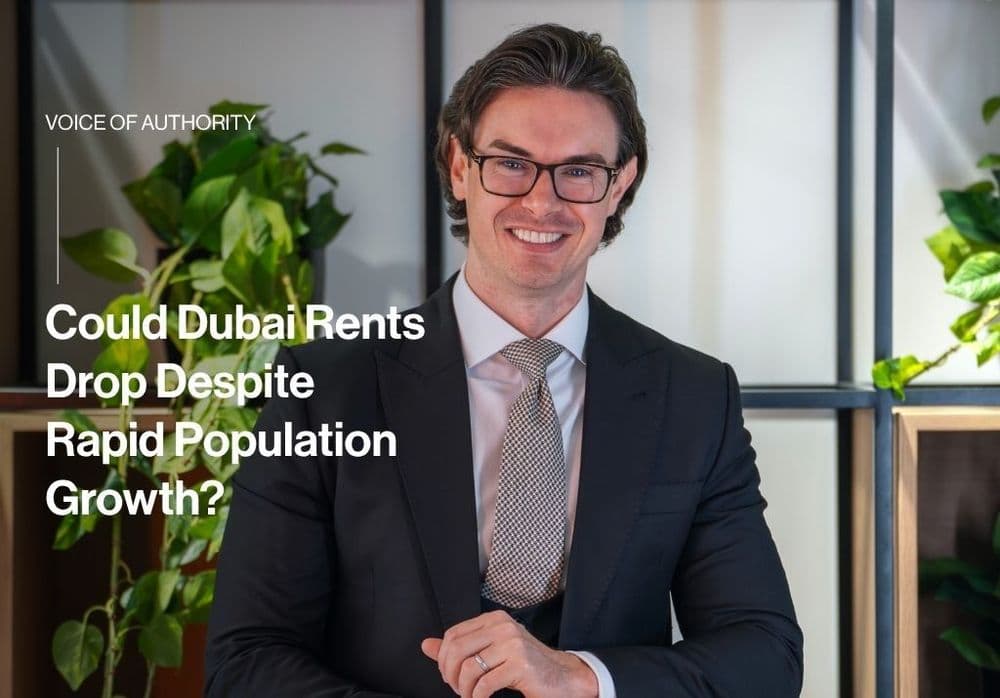Could Dubai Rents Drop Despite Rapid Population Growth?

Dubai’s property market has continued to demonstrate resilience and growth, but with an estimated 366,000 residential units expected to enter the market by 2028, the question on many investors’ minds is whether rental prices could soften and what this means for long-term growth.
The UAE government’s Dubai 2040 Urban Master Plan aims to grow the city’s population to 5.8 million by the year 2040. To achieve this, an estimated 128,000 new residents would need to move to the city each year. This year alone, Dubai has welcomed 208,000 new residents, exceeding the projected pace. While this suggests the population target will likely be met ahead of schedule, there is a critical challenge: the supply of affordable housing is not keeping up with demand.
JVC as a Case Study
Take Jumeirah Village Circle (JVC) as an example. Currently, 43,484 units have been handed over, with another 33,678 currently under construction, scheduled for delivery by 2028. The large influx of units, particularly in the more affordable segment, means that rental prices in areas like JVC are expected to remain stable or potentially soften.
What This Means for Investors
From an investor’s perspective, this is not necessarily negative. More supply at the affordable end of the market creates an excellent entry point for long-term investment, particularly for those looking to benefit from capital appreciation over time rather than short-term flips. With apartments dominating 89% of the total sales transactions in Q3 2025, according to market reports, this segment is clearly attracting first-time buyers and long-term investors who are seeking stability.
With the Central Bank also recording lower interest rates at the end of October 2025, affordability has improved across the board. Lower borrowing costs mean first-time buyers can access mortgages with reduced monthly payments, investors can leverage financing more efficiently to boost long-term yields, and end-users find it easier to step into or move up the property ladder. Combined with increased supply in the affordable segment, these lower rates are creating one of the most accessible entry environments Dubai has seen in recent years.
Dubai Needs More Affordable Housing to Sustain Growth
The challenge remains for Dubai to deliver enough housing to support its fast-growing population. Using a conservative average household size of four, Dubai needs more than 40,000 new homes each year to accommodate incoming residents, yet current delivery rates are only about half of that.
Without a stronger focus on affordable housing, new residents and those seeking to enter the property market may find themselves priced out, which could limit population growth in the long term.
A More Mature, Balanced Market Is Emerging
Ensuring affordable housing is critical not only for newcomers but also for first-time buyers and long-term investors, creating a more mature, sustainable property market. Oversupply in the affordable apartment segment is a strategic opportunity: it allows newcomers to settle in Dubai, provides investors with accessible entry points, and strengthens the city’s long-term economic growth.
While rental prices may soften slightly in the short term due to supply dynamics, the long-term outlook remains positive. Dubai’s property market is evolving into a more balanced, mature ecosystem, providing opportunities for investors, residents, and first-time buyers alike.
For media enquiries, please contact:
Emily Bates, PR & Communications Manager +971 58 598 6637
